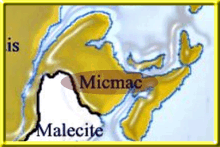
The Innu are an Indigenous people of Canada who traditionally inhabited the areas of present-day Labrador and Quebec. They are also known as the Montagnais and Naskapi, and they are part of the larger Indigenous peoples of the Subarctic known as the First Nations.
The Innu have a rich history and culture that goes back thousands of years. They have lived off the land for generations, relying on hunting, fishing, and gathering for their subsistence. They have a deep spiritual connection to the natural world, and their culture and traditions are closely tied to the land and animals.
European contact with the Innu dates back to the 17th century, when French fur traders and missionaries began to arrive in the region. Over the next few centuries, the Innu faced many challenges, including disease, cultural disruption, and land loss. They were also subjected to residential schools, which aimed to assimilate Indigenous children into Canadian culture, but in reality resulted in the loss of their language and culture.
Despite these challenges, the Innu people have maintained their cultural traditions and continue to live in their traditional territories. Today, they are working to revitalize their culture, protect their lands and resources, and ensure that their rights are respected. The Innu are recognized as a sovereign people in Canada, and they continue to play a significant role in the ongoing process of reconciliation between Indigenous peoples and non-Indigenous peoples in Canada.
Here is a brief timeline of significant dates and events in the history of the Innu people:
Pre-contact: The Innu people have lived in the Labrador and Quebec regions for thousands of years, relying on hunting, fishing, and gathering for their subsistence.
1600s-1700s: European contact begins with the arrival of French fur traders and missionaries in the region. Trade and commerce become increasingly important to the Innu economy, but disease and cultural disruption also become major challenges.
Late 1800s-Early 1900s: The Canadian government establishes residential schools, which aimed to assimilate Indigenous children into Canadian culture but in reality resulted in the loss of their language and culture.
1970s-1980s: The Innu people begin to organize and assert their rights, leading to the creation of the Innu Nation in 1980 and the signing of the James Bay and Northern Quebec Agreement in 1975.
1990s-Present: The Innu continue to work to revitalize their culture, protect their lands and resources, and ensure that their rights are respected. They are recognized as a sovereign people in Canada and continue to play a role in the ongoing process of reconciliation between Indigenous peoples and non-Indigenous peoples in Canada.
